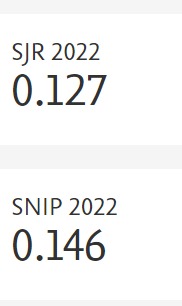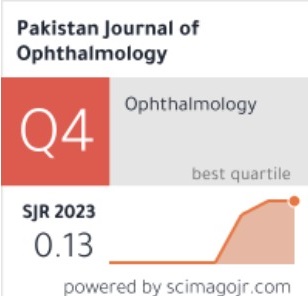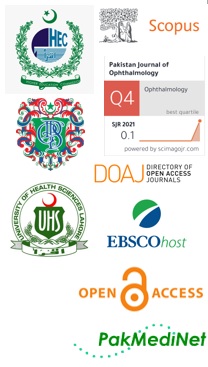Pattern of Intra Ocular Foreign Bodies in a Tertiary Care Hospital of Punjab
Doi: 10.36351/pjo.v37i1.1071
DOI:
https://doi.org/10.36351/pjo.v37i1.1071Keywords:
Intra-ocular foreign Bodies, Retinal Detachment, Phthisis Bulbi.Abstract
Purpose: To describe the epidemiological characteristics, management strategies and outcomes of intraocular foreign bodies (IOFB) presented in a tertiary care setup of Punjab.
Study Design: Descriptive retrospective study.
Place and Duration: Department of ophthalmology, Gujranwala medical college/teaching hospital, from January 2017 to December 2019.
Methods: A retrospective review, of all the patients who had IOFB removal, was performed. Information regarding the nature and circumstances of injury, types of IOFB, operative procedure performed and patient’s pre-operative and post-operative Best Corrected Visual Acuity (BCVA) were analyzed. Descriptive statistics were used for analysis of data.
Results: Record of 22 patients was retrieved. Out of which 18 (81.81%) were male and 4 (18.18%) were female. Mean age was 27.95 ± 9.325 years. Occupational trauma was the leading cause of injury (66.6%). Metallic objects were among the most common type of IOFB (66.6%) followed by glass, concrete stone (each 13.3%) and lead pencil (6.6%). Serious complications seen due to retained IOFB were phthisis bulbi (9.09%), retinal detachment (13.63%) and endophthalmitis (9.09%). On follow-up, 10 patients had BCVA less than hand movement (HM). 5 patients had BCVA of CF to 6/60, 3 patients had BCVA of 6/60-6/24 and 4 patients had better than 6/18.
Conclusion: Most common cause of IOFB was occupational trauma and young age group of working class was the most common population affected. Treatment delay and complications contributed to poor prognosis. Ocular safety measures during high-risk work can reduce the risk of trauma.
Key Words: Intra-ocular foreign Bodies, Retinal Detachment, Phthisis Bulbi.






